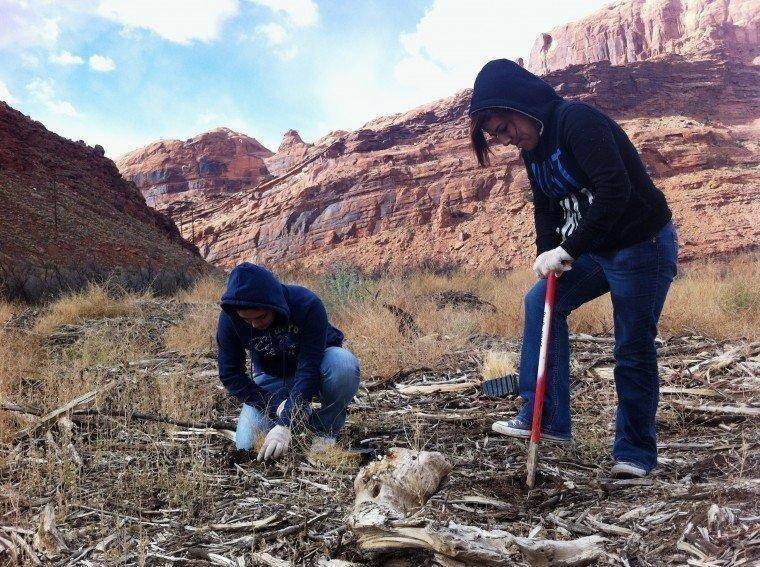В
Volunteers planted about a thousand trees in the Scott M. Matheson Wetlands Preserve on Saturday. The Nature Conservancy and Division of Wildlife Resources, which manage the 894-acre wetlands together, are planting trees and grasses as part of a multi-year restoration project.
В
Non-native trees such as tamarisk and Russian olive have been removed over the last few years. Twenty five volunteers from Price, Montezuma Creek, Cortez, Colo., “and a few faithful preserve lovers” from Moab spent the day Saturday planting black willow, coyote willow, cottonwoods, salt brush, Indian rice grass in their place.
“We are working toward a balance of more natives than non-natives for improving wildlife habitat,” said Linda Whitham from The Nature Conservancy. “We want to provide the best quality wildlife habitat.”
The Nature Conservancy and the Utah Division of Wildlife Resources purchased the wetlands starting in 1990, with the agreement that The Nature Conservancy would manage the preserve.
More than 200 species of birds live in or visit the preserve on their migratory flights. It is also home to beaver, muskrat, mule deer, raccoon and other wildlife. Some wildlife will travel from the La Sal Mountains through the Mill and Pack creeks corridor to the preserve.
“Bears even come up and down the corridor,” Whitham said.
Firefighters completed a 200-acre prescribed burn in October to control bulrush, said Chris Wood of the Division of Wildlife Resources.
Bulrushes are native to the area, but when overgrown, limit open water space that is crucial for waterfowl and other wildlife.
“We’re trying to bring more water back into the preserve to restore wetland habitat and improve the quality of wetland habitat,” Whitham said.
Bringing more water into the wetlands has increased the number of birds that live and visit within preserve, as well as amphibians.
“The most exciting thing for me is the return of the northern leopard frog,” Whitham said. “It was gone for years and years. It came back last year for the first year. There were thousands of them.”
The controlled burn last month was also part of a comprehensive plan to prevent uncontrolled fires.
“We’re trying to reduce the fuel loads so we don’t have the catastrophic fires,” Whitham said. “We’re trying to create firebreaks that would protect the Moab community.”
The preserve is adjacent to several neighborhoods on the north and west side of Moab.
The new plants are also part of an effort to recover from a wildfire that burned 65 acres within the preserve on June 6 and 7, 2011.
“Some teenagers up the creek were playing with fireworks,” Whitham said. “It was dry and windy. The fire came down the creek.”
A portion of the preserve’s trail system, bridge and interpretive exhibits were damaged.
It also burned the cottonwoods. The preserve was closed to the public for nearly four months after the 2011 fire.
Whitham said that crews are still removing the dead trees from the fire, many of which have become a safety problem on the trail system.
“We will have a ton of firewood that will be brought to the parking lot for the public to use,” she said.
В
Click here to read more from the Moab Sun News.
В

